This culture trail of Antequera offers you the chance to discover everything the historical city has to offer, together with Ruralidays. See it for yourself!
We’ll provide you with handy tips and information about what to see in Antequera so that you don’t miss a thing.
If you’re planning a trip to the province of Malaga, a stop-off in Antequera is a must. Also known as “the heart of Andalucia”, since 2500 BC this town has been the main stop-over for anyone travelling between Seville, Granada, Malaga and Cordoba.
With countless monuments, it’s impossible to visit them all unless you follow the recommended order of a culture trail. Antequera has over 30 churches with stunning interiors, the influence of various cultures on its arts and traditions, such as Roman, Arab and Spanish, whilst not forgetting that the oldest dolmens in Europe are to be found here.
Additionally, because the historical heritage is found all together in the old town, then there’s no need to plan long trips to visit everything Antequera has to offer.
What to visit in Antequera: the culture trail
Niña de Antequera viewpoint
Why not kick off the culture trail at the Niña de Antequera viewpoint (1), a site stretching out over 400m to the south of the city, from which you can enjoy spectacular views of the Torcal rock formations.
Real Colegiata de Santa María la Mayor
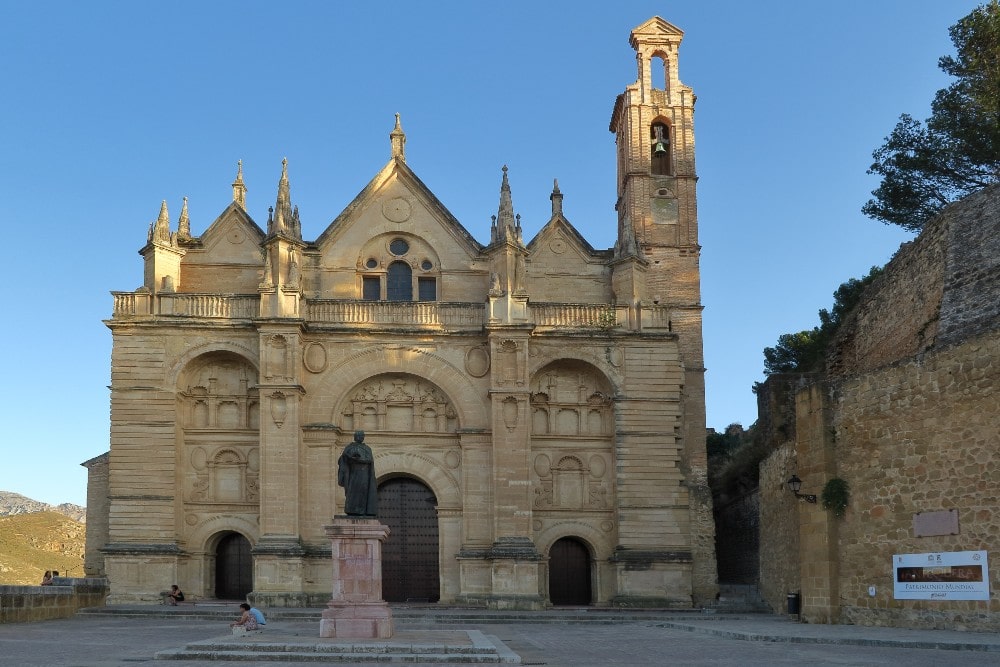
After being awestruck by this incredible landscape, head to calle Villa de Enmedio where, in the plaza de los Escribanos, you’ll find the Real Colegiata de Santa María la Mayor (Royal Collegiate Church) (2). This 16th century church, known as the first columnar church in Andalucia—i.e. with a system of columns as support for the roofs—blends different styles ranging from Late Gothic to the purest Renaissance style, as well as some Mudejar features. One highlight is the ceiling adorned with intertwined beams and inserts. Nowadays, concerts and exhibitions are held in the interior.
On exiting, you will come across spectacular Roman Baths (3) which date to the 2nd century AD. Next to these is a detailed explanation that will help you to understand the layout of the cold, tepid and hot water baths, the changing rooms, as well as the floor mosaics and even an old neighbourhood from the 15th century AD, where you can admire the remains of walls, streets and paving.
Arco de los Gigantes
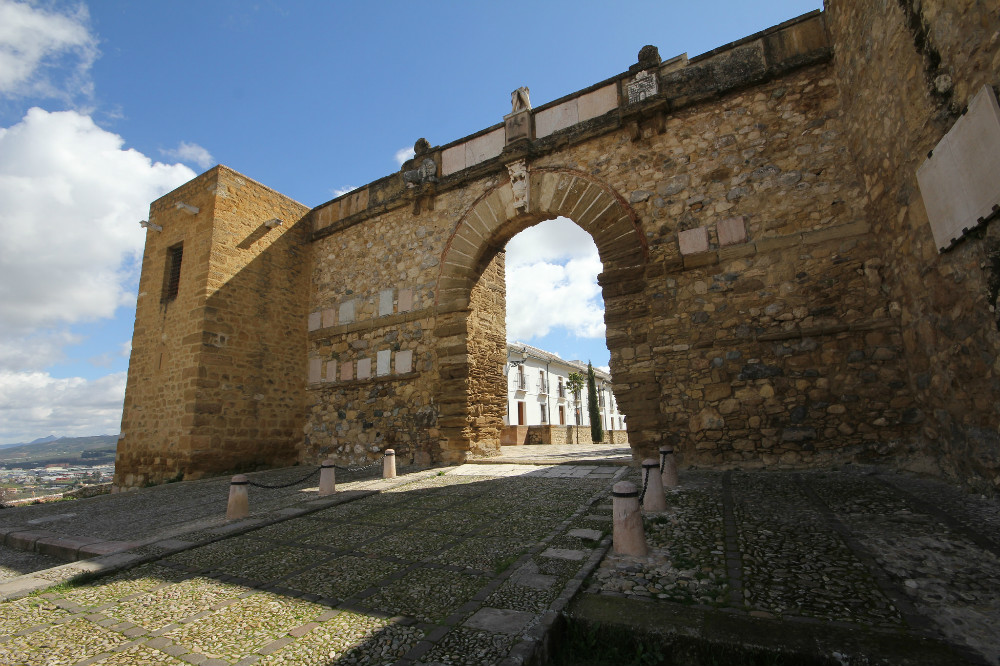
As soon as you’ve finished visiting the first Renaissance church in Spain, head north until you reach the Arco de los Gigantes (Arch of the Giants) (4). This impressive arch, some 7 metres high, was built by the architect Francisco de Azurriola in 1585, replacing the old Islamic gateway to the town, “Puerta de Estepa”, located to the north of Antequera.
The arch used to be decorated with a majestic sculpture of Hercules, the remains of which can be seen today alongside the Roman inscriptions carved into stone. These were brought here from the surrounding Roman towns. Here you can see the town’s coat of arms, made up of three elements: a vase of lilies, a castle, and a lion.
The stunning Alcazaba fortress of Antequera
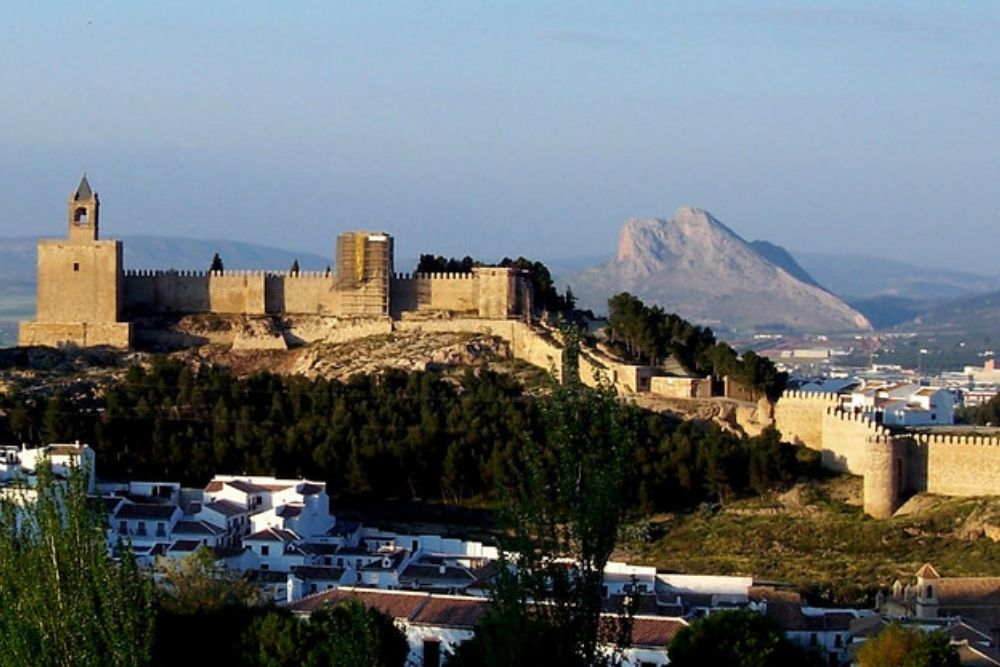
Continue until you reach the Alcazaba fortress (5), a complex covering some 62,000 square metres. This Moorish fortress was built during the Islamic reign in 1300, over the remains of a Roman settlement, and as defence against Christian invaders. The main tower of the Alcazaba is the Torre del Homenaje or Tribute Tower, where a bell tower was built in 1582, the ringing of which was used to regulate irrigation on the plains.
From here you can admire stunning views to the northeast of the town and behold the striking Peña de los Enamorados. This mountain, standing 878m tall—together with the Torcal of Antequera rock formation and the Dolmens—forms part of Antequera’s rich cultural heritage.
The entrance fee to the Alcazaba is €6 and includes a visit to the Real Colegiata, with audio-guide in 5 languages, descriptive guide of the Alcazaba, and a historical performance. For children under 6, entrance is free, while for those aged 7- 16, the fee is €3.
- Monday to Sunday, 10 AM to 6 PM
- Tuesdays (except public holidays), from 2 PM. to 6 PM (Free admission).
- Closed: 25 December, 1 & 6 January.
[opening times from turismo.antequera.es]
An Antequera church that you simply can’t miss
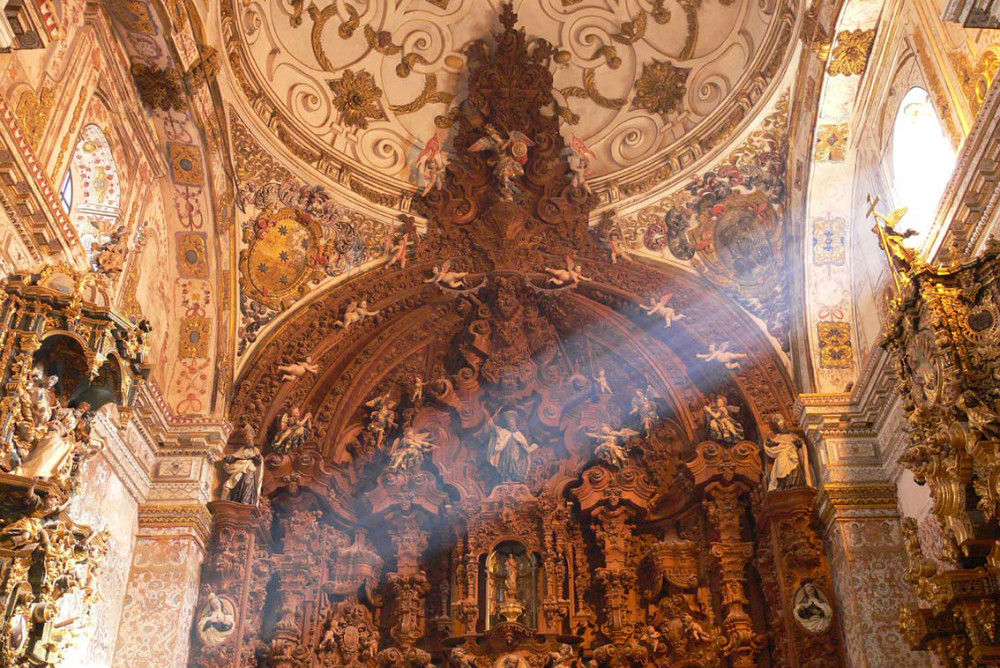
When you leave the Alcazaba, head west along calle Rastro until you reach callejón Piscina, an alleyway. Here, you will see the iglesia de Nuestra Señora del Carmen (6), the church of our Lady of the Carmen, parish of Santa Maria la Mayor. The interior dates to the 18th century and is truly spectacular. The magnificent altarpiece carved in red pine, adorned with sculptures of angels, saints, bishops and popes, is the church’s principal masterpiece. In order to resemble traditional mosaics, the entire interior area, in addition to the altar, is painted in dazzling colours.
Museo Conventual de las Carmelitas Descalzas
Once you’ve finished admiring this delightful church, head to the calle del Carmen and turn right on the cuesta de los Rojas. Continuing along this street, you will end up in plaza de las Descalzas, where you will find the convent of San Jose, inside of which is the Museo Conventual de las Carmelitas Descalzas (Convent Museum of the Barefoot Carmelites) (7).
The entrance is through a wooden doorway and inside you’ll see pastry products displayed on a small counter. These sweets are made by the cloistered nuns, so why not go ahead—treat yourself and have a taste. Just pull the rope that rings a little bell, place your order and put your money on a tray. The nuns will turn the wheel, allowing you to savour your pastries in a matter of seconds.
In this 17th century convent there is also a museum, where the most highlights of Antequera’s exceptional cultural heritage are on display. Additionally, don’t miss the paintings of Santa Teresa de Ávila, the founder of the Barefoot Carmelites order in the 16th century.
Palace and Dolmens
Right next to the museum is the palacio de los Marqueses de la Peña de los Enamorados (8) and the Convent of la Victoria (9). At the first, note the Mudejar- Renaissance façade and its two towers which also serve as viewpoints. At the convent of La Victoria, it’s worth pointing out the construction of its church, which follows Roman schema despite being built in the 17th century.
Continuing along carrera de Madre Carmen, you’ll reach cuesta Archidona—turn right at calle Belén. Strolling between churches, you will arrive at the Puerta de Granada (10). This was built in the 18th century and features the coats of arms of Antequera and Ferdinand VI. 650 metres separate the Puerta de Granada from the two funerary constructions of the Dolmen de Viera (11) (2,000 BC) and the Dolmen de Menga (12) (2,500 BC). These two funerary structures are an essential stop if you have enough time.
Museo de Antequera
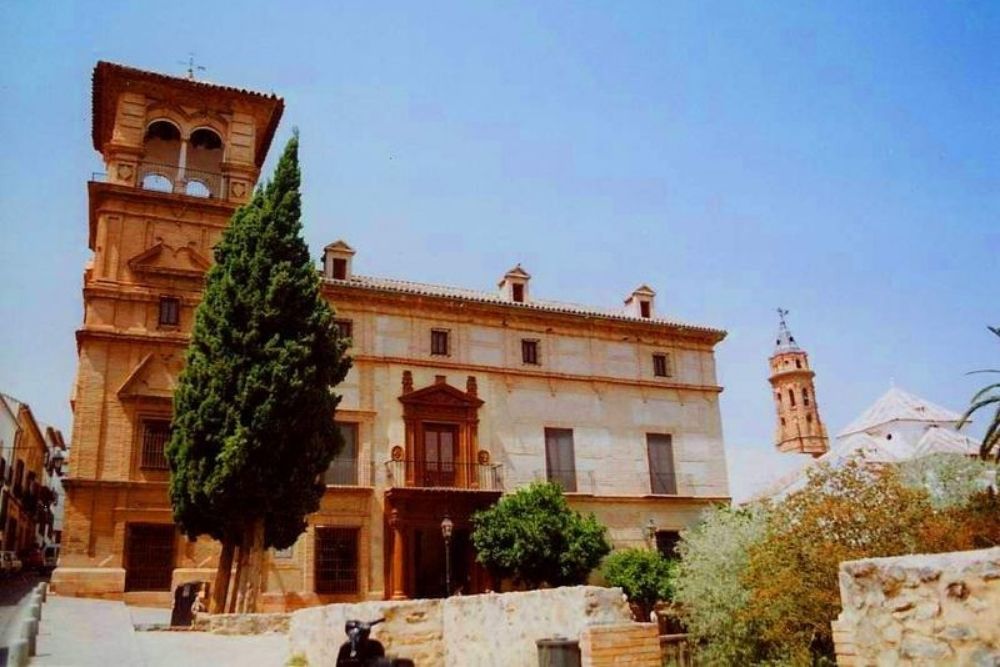
On leaving the church of the Barefoot Carmelites, head west towards calle Nájera. Look on your right for the Museo de Antequera (Antequera Museum) (13), within the palacio de Nájera. Its best-known work is, without a doubt, a sculpture of Ephebos, standing 1.4m tall. This 1st century AD bronze statue was uncovered at a local farm in 1950, and is considered the best example of a Roman statue ever to be found in Spain. The museum’s galleries also house works from the Roman villa of Antequera, jewellery, and a collection of works created by the painter Cristóbal Toral Antequera.
Final stops on the culture trail of Antequera
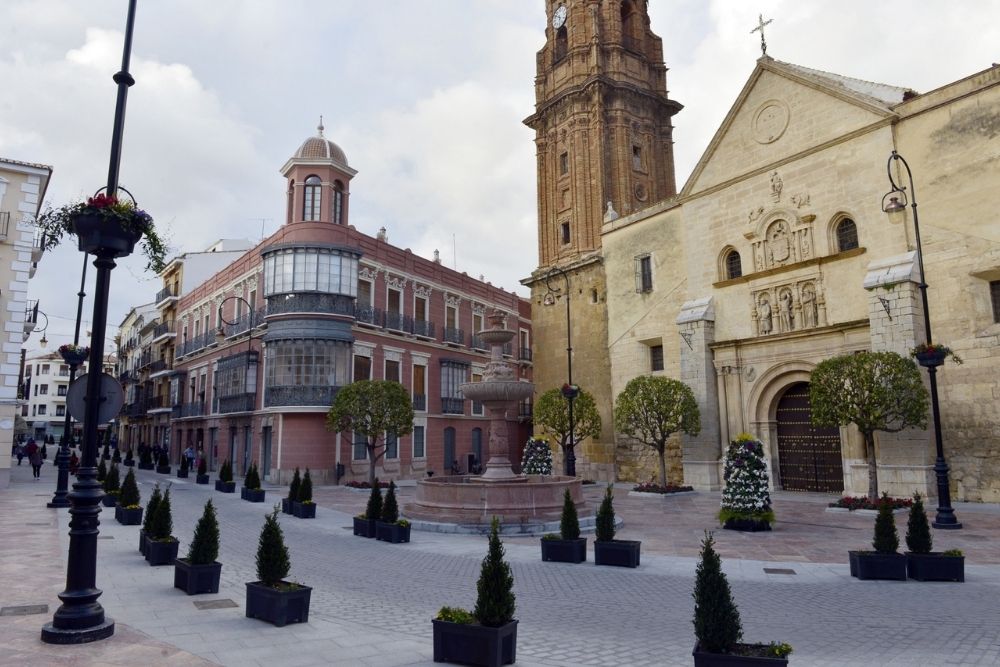
At the end of Calle Nájera, turn right and head towards the plaza de San Sebastián (14). At its centre is a Renaissance-era fountain designed by Pedro Machuca in 1545, as well as the collegiate church of San Sebastián, with a Baroque doorway. Note the brick tower, built in the 18th century and the tallest in the town. Inside the church, various paintings and sculptures can be admired.
From the square, you can choose to visit the ex-convent of Santo Domingo (15), heading along cuesta de la Paz. This church from the 17th-18th century still features an artistic multi-coloured Mudejar coffered ceiling. Heading along calle Encarnación, you will arrive at the convent of la Encarnación (16), whose 16th century church boasts the Granada Mudejar style covering the sole nave, at the centre of which is the main chapel.
Heading up Infante Don Fernando street from the plaza San Sebastián, you will reach the convent of San Agustín (17).
Continuing on Infante Don Fernando street past the Antequera Town Hall (former convent of the Third Order of Franciscans) and the iglesia de Nuestra Señora de los Remedios church (where the Virgin of the Remedies—patron saint of Antequera—is worshipped), you will reach the Plaza de Toros de Antequera (18) or Antequera bullring, one of the most beautiful bullrings in Antequera, home also to the Municipal Bullfighting Museum.
Antequera Tourist Office
If you want to learn more about what to do in Antequera, just ask at the Tourist Office, located at Plaza de San Sebastián, 7.
Opening times:
- From Monday to Saturday, 9 AM – 6:30 PM.
- Sundays, 10 AM – 2 PM.
Contact: 952 70 25 05 / 952 70 83 05
Where to stay in Antequera
Besides spending plenty of time discovering the wonders of Antequera, why not take a look at the best holiday homes in and around Antequera? You won’t be disappointed!

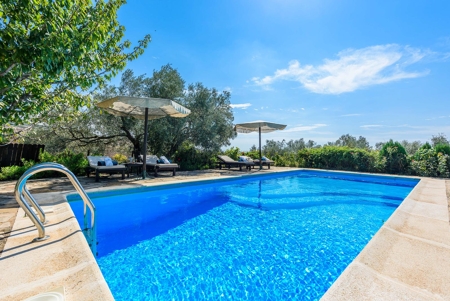

Antequera is a town worth visiting at least once in a lifetime to discover all of its secrets. Stay tuned, because there is still plenty more to see in Antequera.

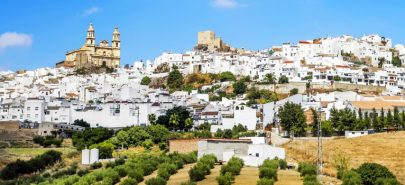





I blog often and I truly appreciate your information. This article has truly peaked my interest and I will definitely visit Antequera when I’m going to Andalusia.
Hi Charlie! That was the goal 😉 Keep staying with us to discover more things about Andalusia!
Hello my loved one! I want to say that this post is awesome, nice written and come with approximately all vital infos about Antequera. I’d like to see extra posts like this .
Thank you Jessica! Have you ever been to Antequera?
Appreciate this post. Let me try it out.
Thank you very much, Petra! Let us know if you like Antequera 😀